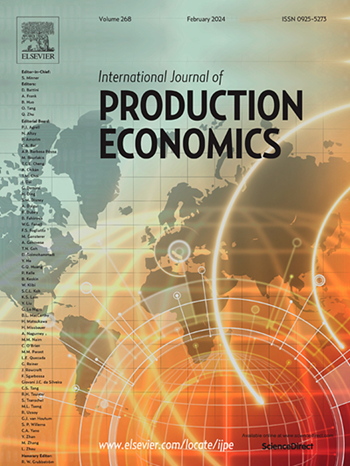Data-driven digital transformation for uncertainty reduction – Application of satellite imagery analytics in institutional crop credit management
IF 9.8
1区 工程技术
Q1 ENGINEERING, INDUSTRIAL
引用次数: 0
Abstract
Agriculture financing in developing countries is dominated by informal lending. One challenge in the expansion of institutional (formal) credit is the lack of reliable data on the historical performance of farmers. Due to the absence of data, financial institutions face uncertainties that obstruct the decision-making process, leading to sub-optimal credit disbursal. Based on the theoretical lens of uncertainty reduction, this study focuses on achieving two key research objectives: identifying uncertainties in institutional crop credit management processes and examining how a data-driven digital transformation for social innovation based on satellite imagery analytics could alleviate these hindrances. We longitudinally study a satellite imagery analytics firm and complement the case data with stakeholder interviews. The results capture state space, option, and ethical uncertainties institutional lenders face in expanding crop credit and explain how data-driven digital transformation can reduce these uncertainties. Adopting such a data-driven digital transformation promises to make different stakeholder groups interact and collaborate to achieve the common objective of financial inclusion of small-scale economic actors. Further, we show that satellite imagery in crop credit management can significantly reduce the uncertainties caused by the lack of independent data sources.
减少不确定性的数据驱动的数字化转型——卫星图像分析在机构作物信贷管理中的应用
发展中国家的农业融资以非正式贷款为主。扩大机构(正式)信贷的一个挑战是缺乏关于农民历史业绩的可靠数据。由于缺乏数据,金融机构面临的不确定性阻碍了决策过程,导致次优信贷支出。基于减少不确定性的理论视角,本研究侧重于实现两个关键研究目标:确定制度作物信贷管理过程中的不确定性,并研究基于卫星图像分析的数据驱动的社会创新数字化转型如何缓解这些障碍。我们纵向研究了一家卫星图像分析公司,并通过利益相关者访谈来补充案例数据。研究结果捕捉了机构贷款人在扩大作物信贷时面临的状态空间、选择和道德不确定性,并解释了数据驱动的数字化转型如何减少这些不确定性。采用这种数据驱动的数字化转型有望使不同的利益相关者群体互动和合作,以实现小规模经济行为者的金融普惠的共同目标。此外,我们发现卫星图像在作物信贷管理中可以显著减少由于缺乏独立数据源而造成的不确定性。
本文章由计算机程序翻译,如有差异,请以英文原文为准。
求助全文
约1分钟内获得全文
求助全文
来源期刊
CiteScore
21.40
自引率
7.50%
发文量
266
审稿时长
52 days
期刊介绍:
The International Journal of Production Economics focuses on the interface between engineering and management. It covers all aspects of manufacturing and process industries, as well as production in general. The journal is interdisciplinary, considering activities throughout the product life cycle and material flow cycle. It aims to disseminate knowledge for improving industrial practice and strengthening the theoretical base for decision making. The journal serves as a forum for exchanging ideas and presenting new developments in theory and application, combining academic standards with practical value for industrial applications.

 求助内容:
求助内容: 应助结果提醒方式:
应助结果提醒方式:


